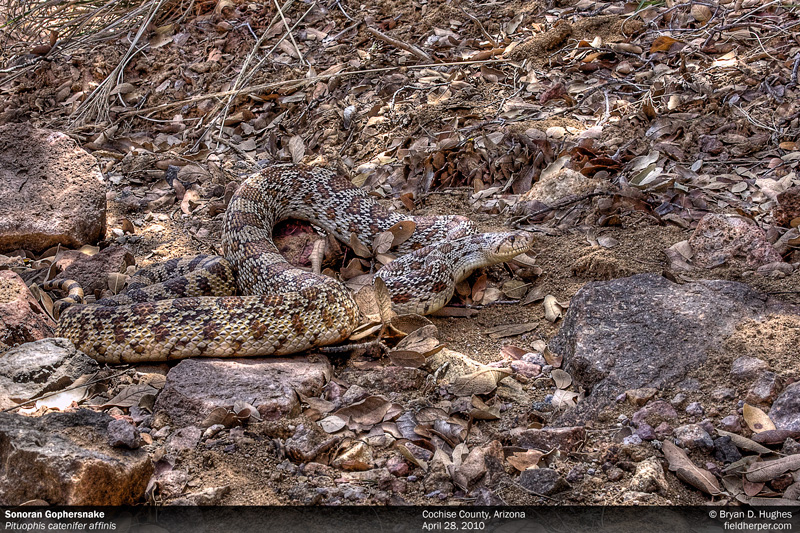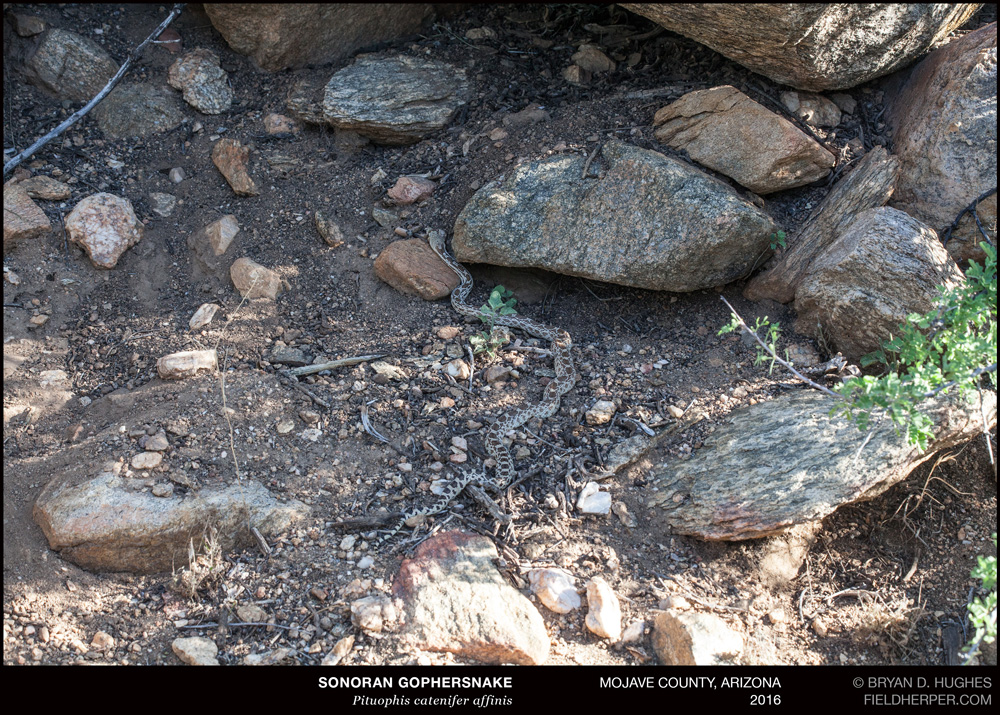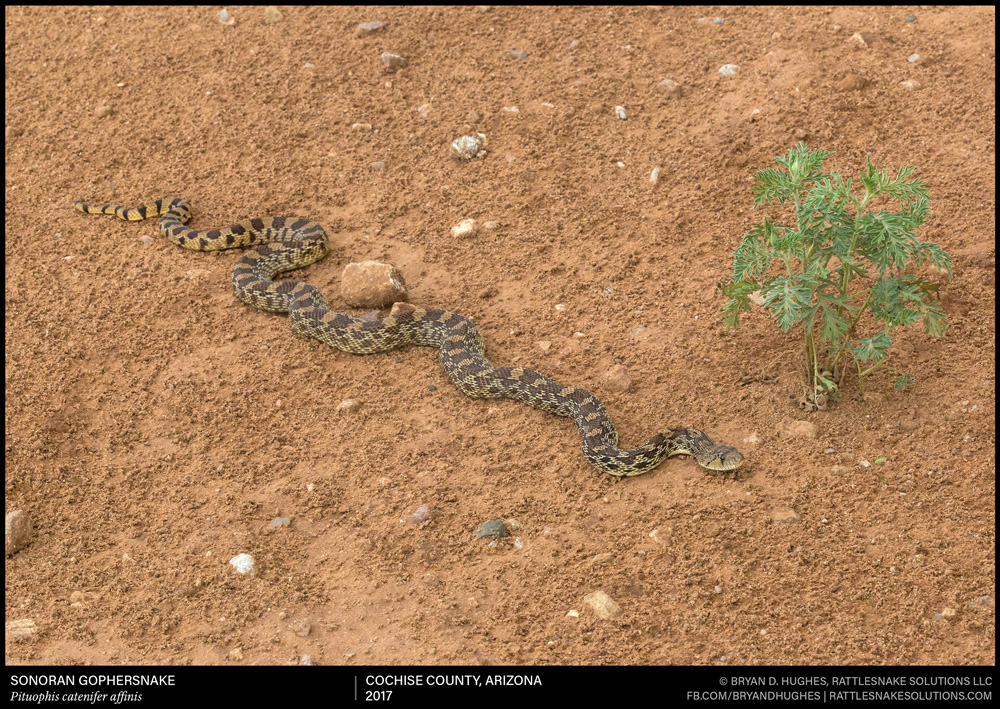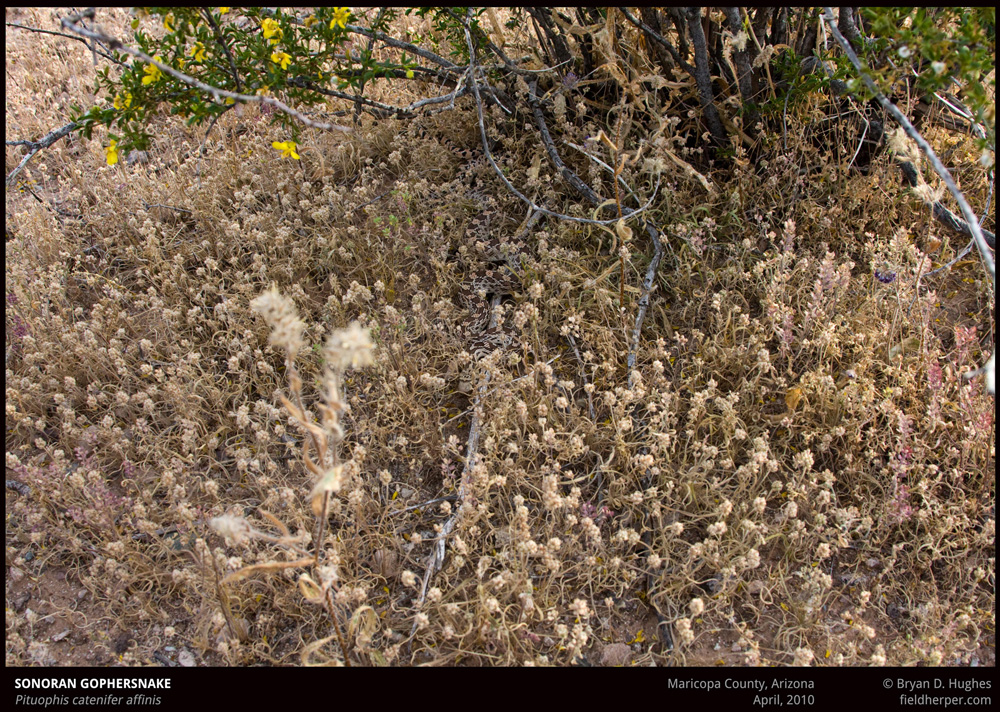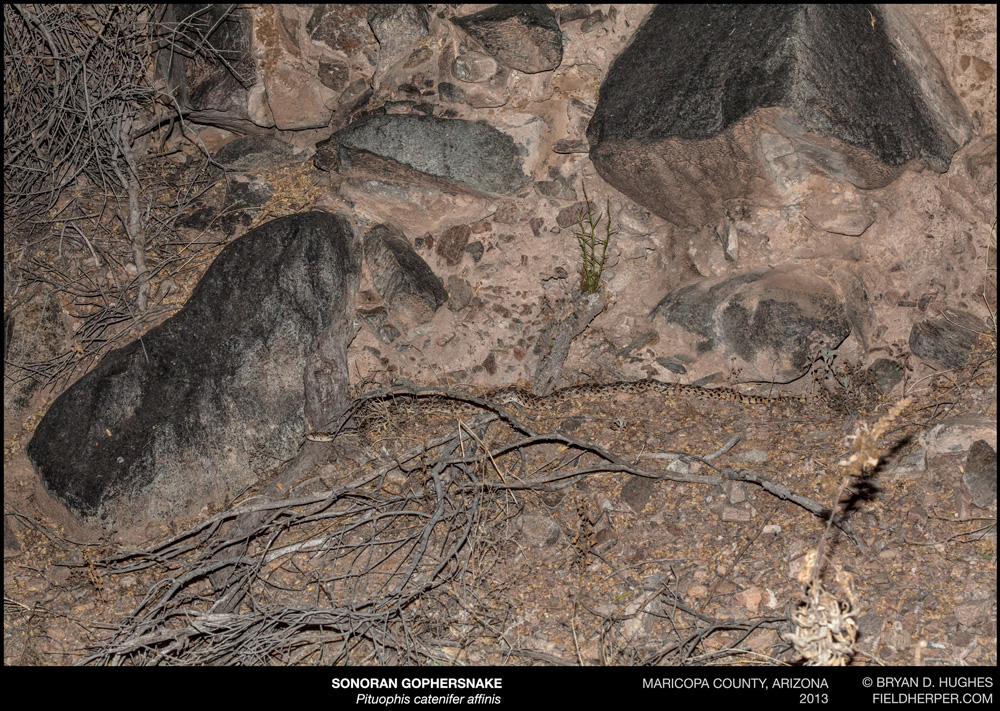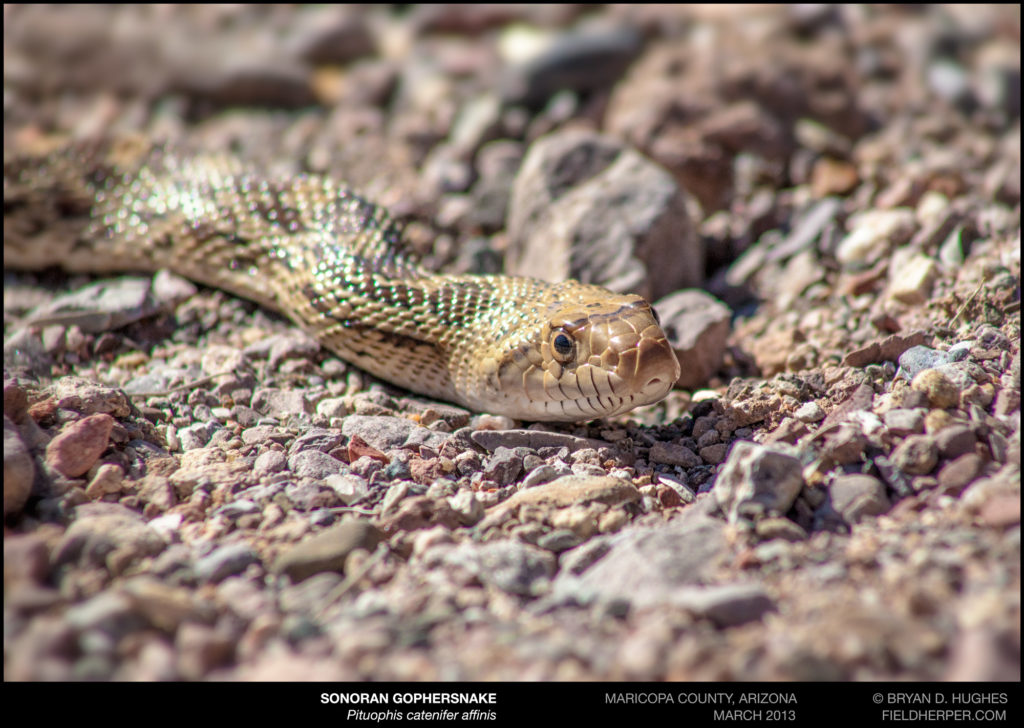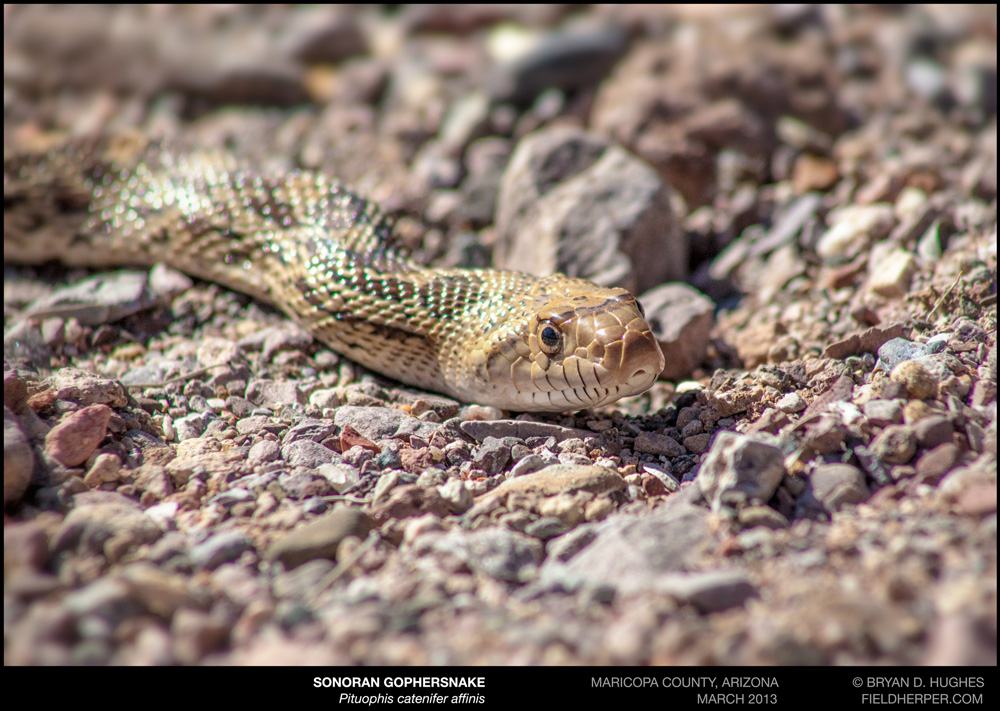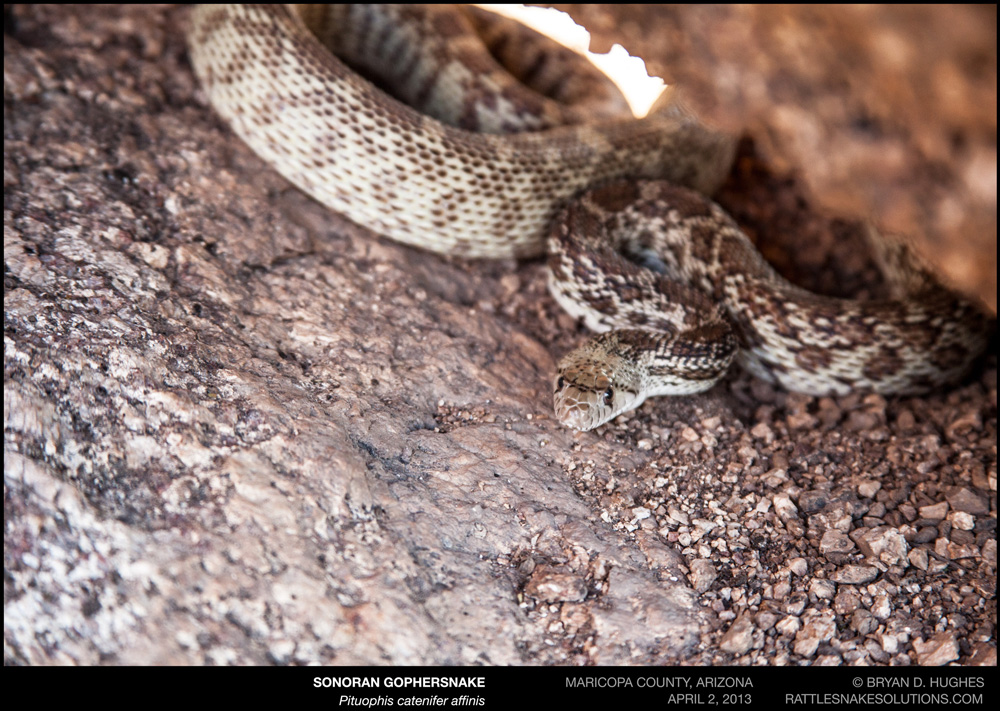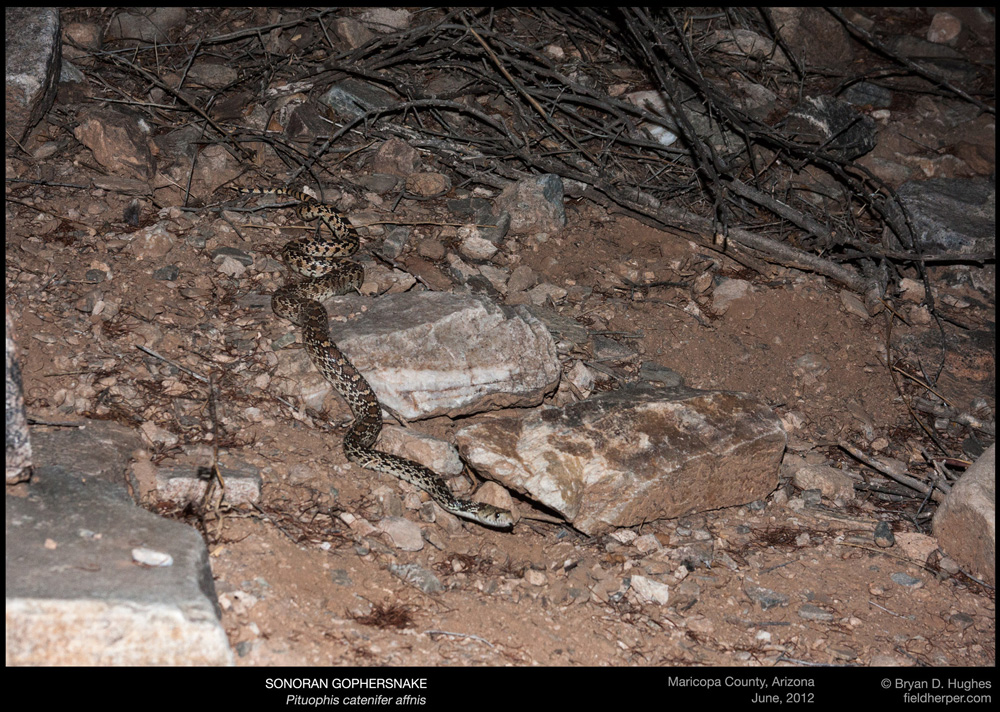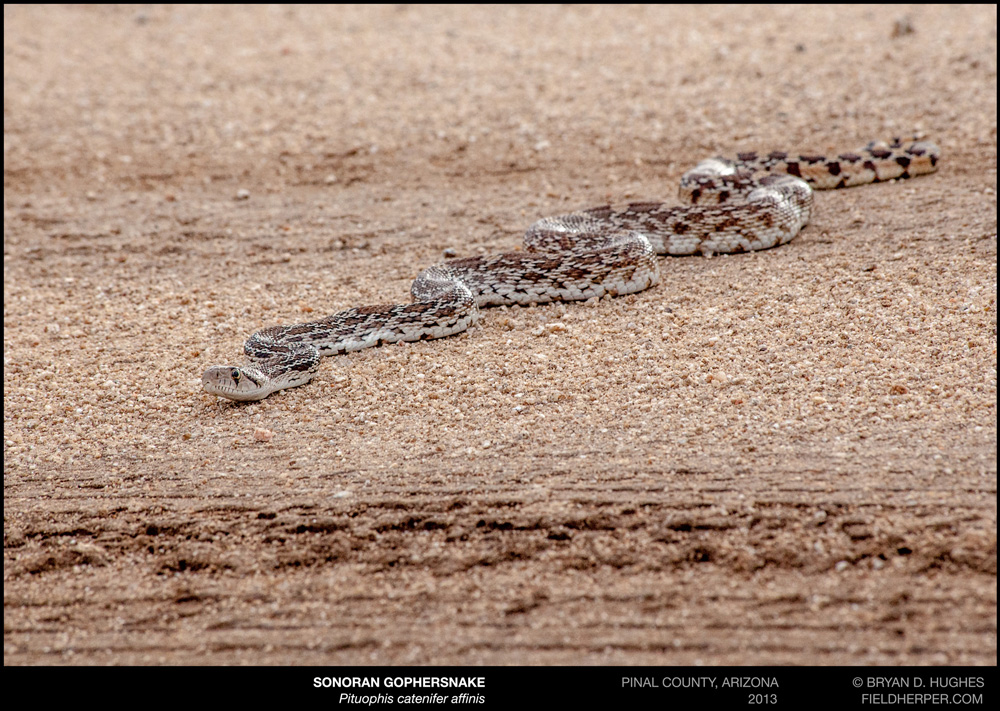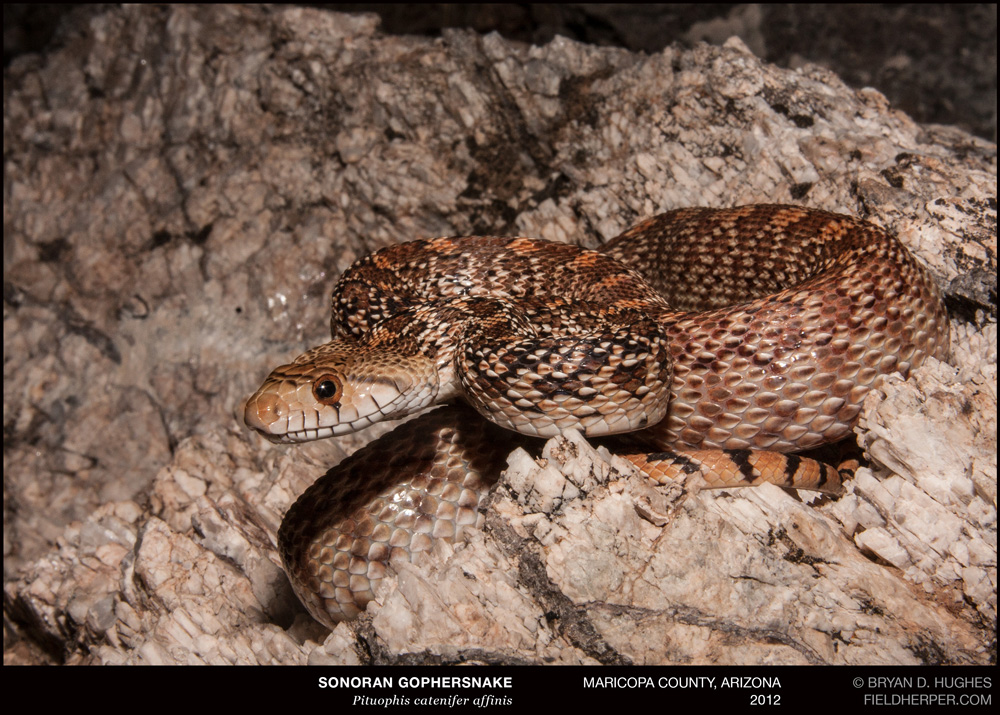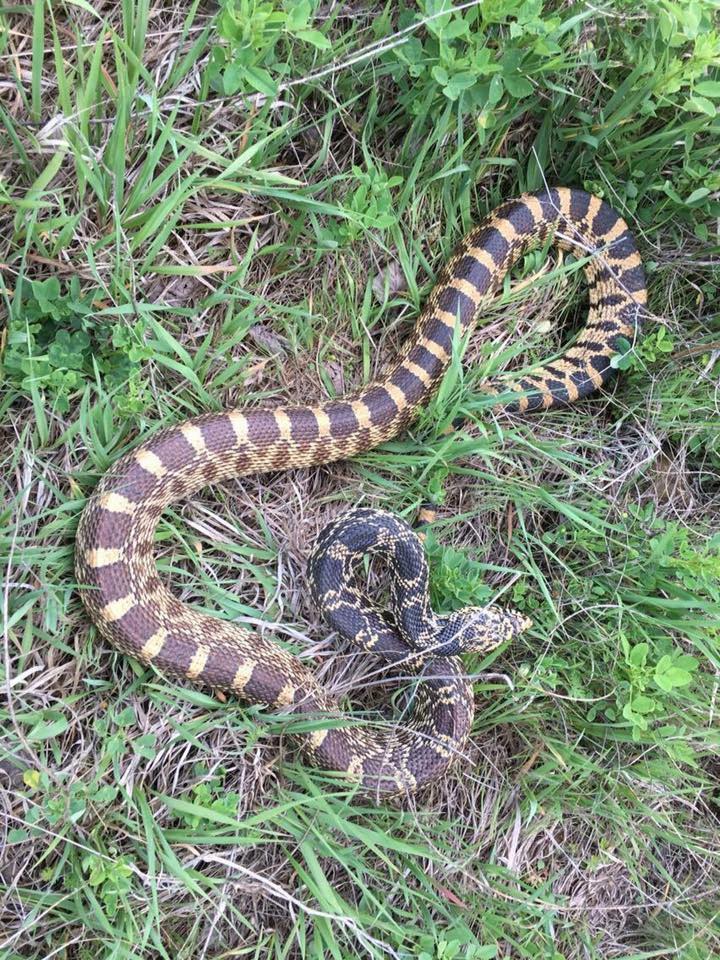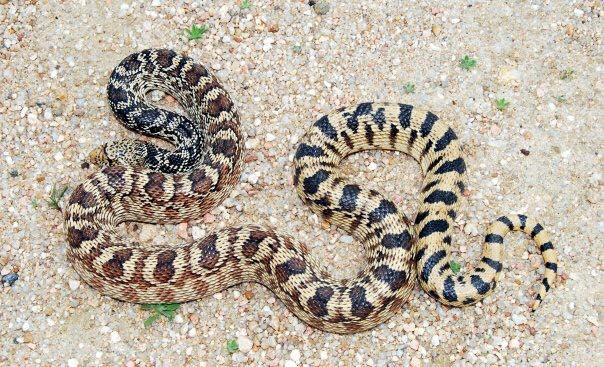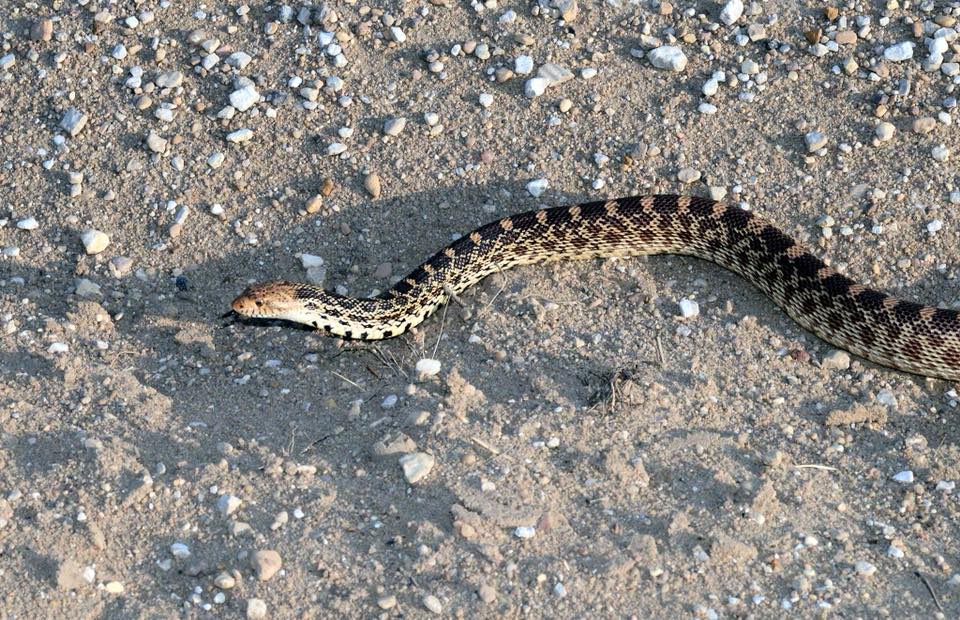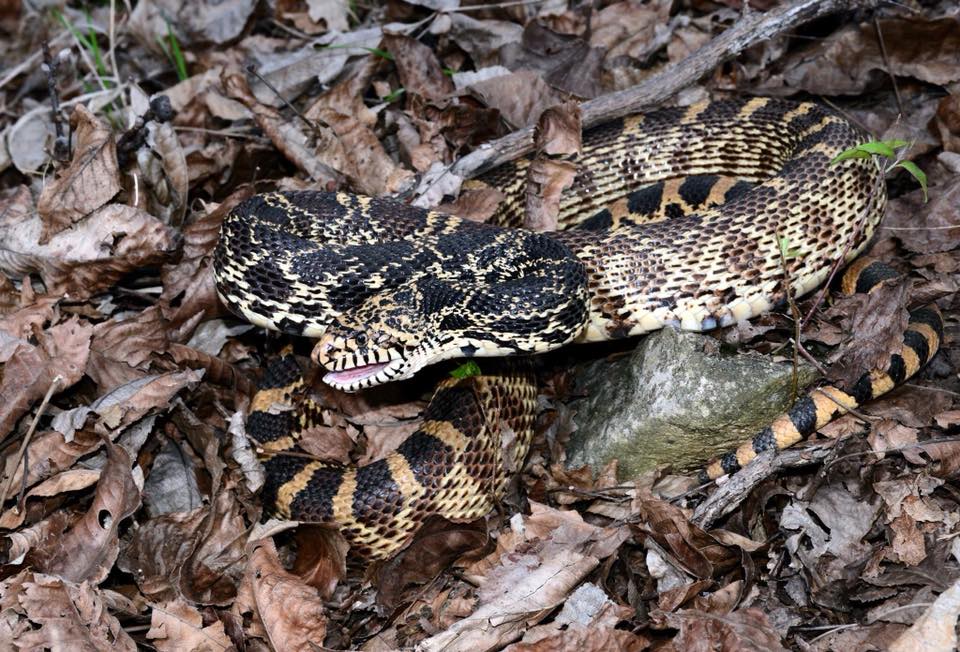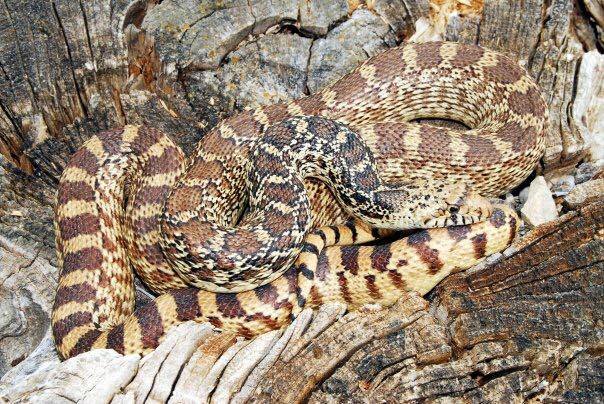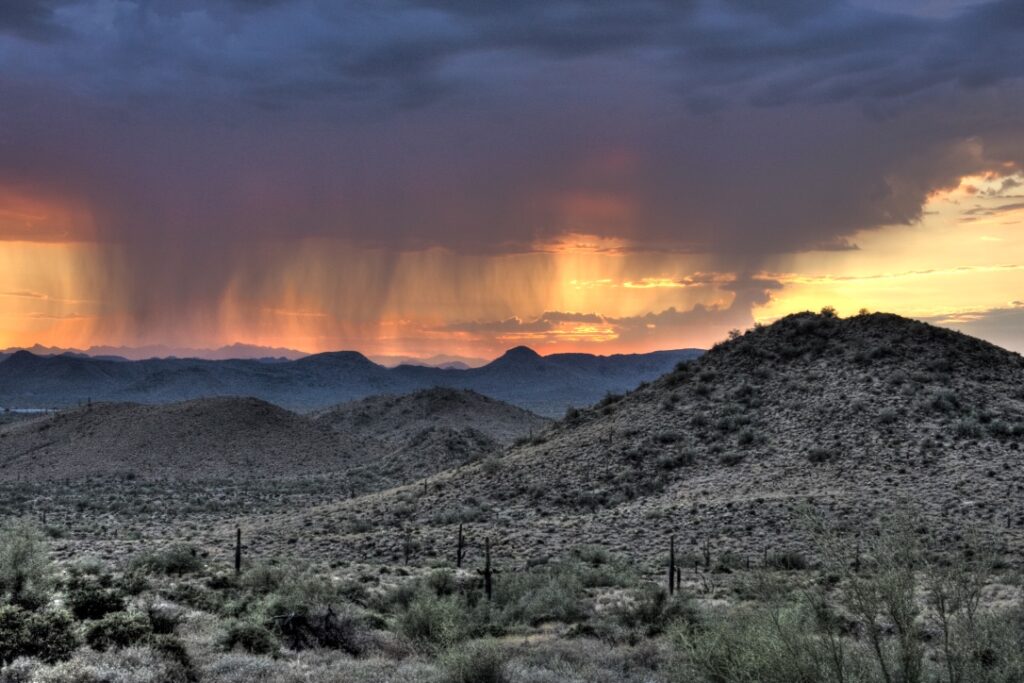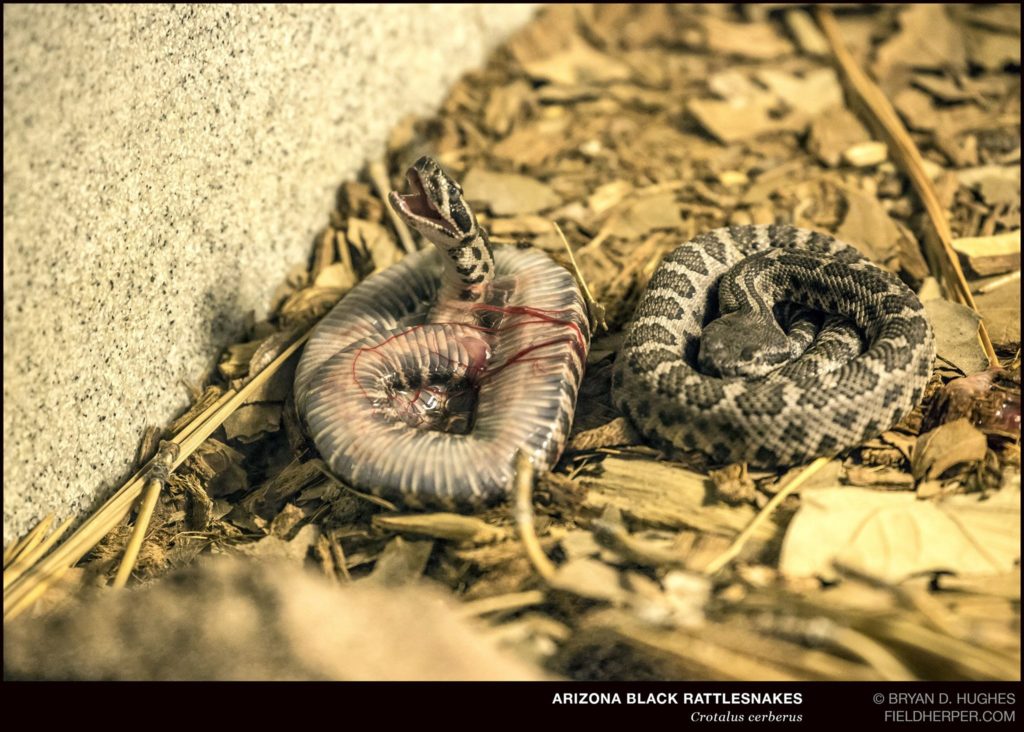Every monsoon season, a handful of big storms that sweep through the valley and rearrange our yards and shingles. The next day, an chainsaws and leafblowers join the sound of cicadas as the aftermath is handled.
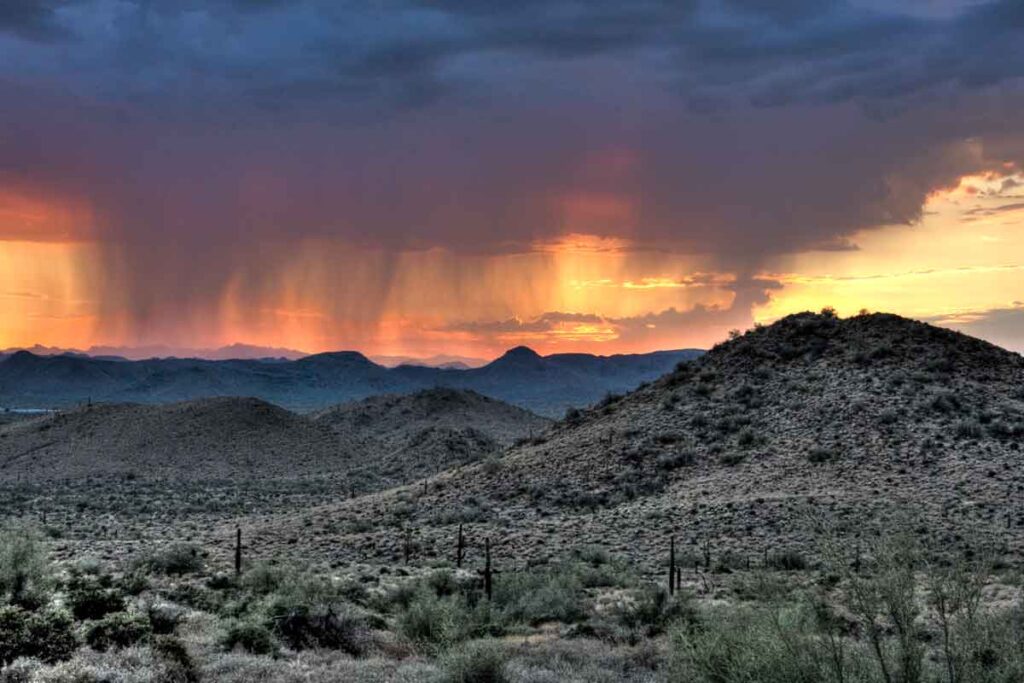
Along with the downed trees and trash-scattered streets are rattlesnakes that have been displaced by the water and wind. After a massive storm, places where rattlesnakes may have been hiding from the heat can be flooded or destroyed. That means that these snakes have just a few hours to find new places to hide before the daytime heat kills them. That often puts them into conflict with people.
One of the places where rattlesnakes frequently live during the hottest times of year are in small caves along the edges of normally-dry washes. When these washes fill with water, rattlesnakes need to move. For home owners at the edges of these washes, that means that the rattlesnakes could be moving to the nearest dry area – your patio. Covered patios and entryways make up the majority of rattlesnake relocation situations after rainouts. They’ll also be hiding in the debris caused by the wind and flooding. Fallen trees and collections of yard debris are going to provide cool cover for these displaced snakes, and should be treated with caution when they are cleaned up.
The extra humidity also causes rattlesnakes to be more active, so they are already more likely to be hiding in temporary hiding spots, and may be more easily displaced by the big rain. Rattlesnakes are shedding their skin and heading out to hunt and drink after a long period of inactivity during the hottest and driest time of year, and that makes post-storm movement even more of a factor for home owners bordering desert areas.
Aside from the normal rattlesnake safety measures, extra caution is recommended during the cleanup process.
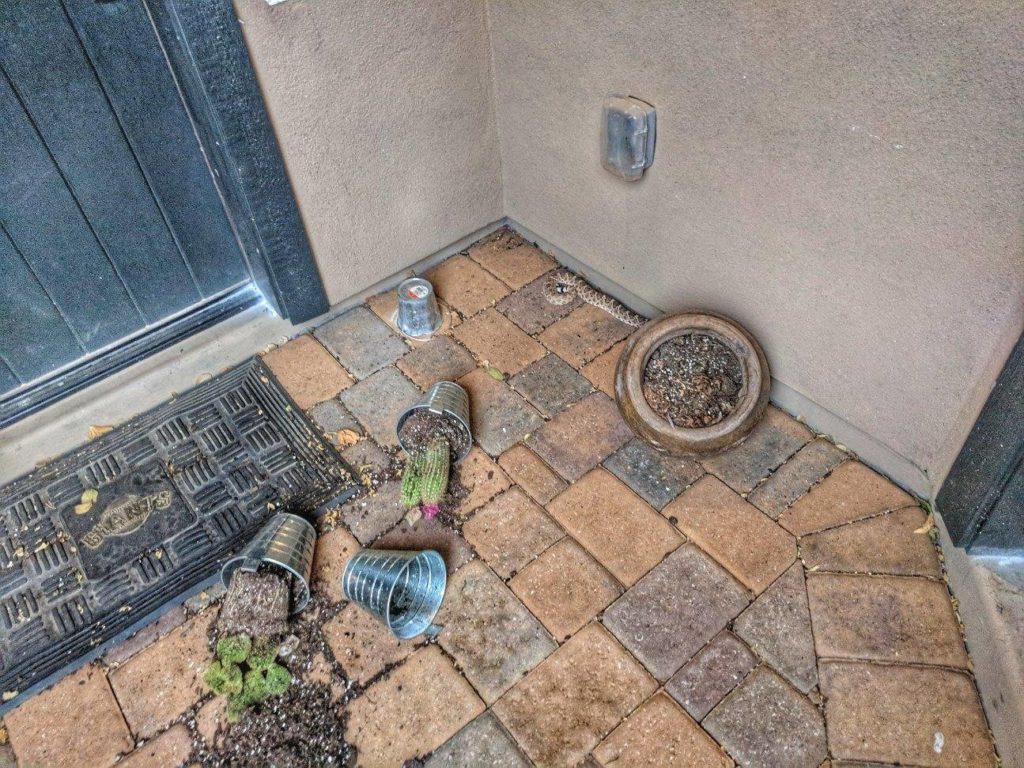
What should you do to keep safe from displaced rattlesnakes?
- Be alert around covered entryways and patios, especially in the corners. Rattlesnakes often use these covered areas to hide after extra-wet weather forces them to leave more preferable areas. If you have any decorations in the corners, like pots or plants, it may be good to move them out or at least create extra space between the corner and these features. Especially in the early morning, be mindful of the spots right around the front door.
- If you have downed trees or yard debris that has collected after the heavy wind and rain, give it a day before cleaning it up. Be mindful while you do so of the potential for rattlesnakes to be using it as temporary shelter. Rattlesnakes may be “stuck” in situations where they need to quickly choose places to hide from the daytime heat that are not preferable, and may end up hiding in piles of branches and fallen leaves. By waiting 24 hours, you give the snakes a chance to leave if they are there during the next suitable time to do so (at night).
- If you live near a wash or drainage, be especially cautious. Rattlesnakes are very common in drainages and the rain can force them to move erratically, often taking cover at the nearest available shade – your house.
- Accompany dogs outside during their bathroom breaks and give the yard a quick check before allowing children to play in unprotected yards. If possible to let them out earlier in the day while it’s still hot, that may further decrease the chance of an unwanted rattlesnake encounter.
- If you do not already have a rattlesnake-protected property, consider having a rattlesnake fence professionally installed to keep rattlesnakes out even during periods of irregular behavior.
- If any rattlesnakes are seen on the property, do not approach them and call a professional to help.
More than the monsoon – rattlesnakes may be surface active in any temperatures, any time of year.
Something that surprises many home owners each year are sightings of rattlesnakes after Winter rainfall. While it is true that rattlesnakes are largely inactive during the cooler months of the year (roughly November through February in the Phoenix area), some conditions will make them show up at any time. Heavy rain can cause similar displacement issues for rattlesnakes if it gets into places they’ve selected to spend the winter … especially if these are temporary, artificial, or new sites.
Other than displacement, rattlesnakes still need to drink in the winter time. Even in relative low temperatures for rattlesnake activity, they may come to the surface to collect rain in their coils or drink it directly from the rocks.
Here’s a video I took years ago at a small Timber Rattlesnake den, showing one of the several present rattlesnakes coming out to drink from the rocks.
If you have a rattlesnake denning on your property, you have a decent chance of seeing it sitting on the surface as the rain starts, or just after if the storm breaks to sun. What most people don’t like to learn about these situations is that the rattlesnake has almost certainly been in the area since about October, just hidden until having a reason to come out.
All in all, rain is just one of the many factors that make rattlesnakes move and be visible to people.

